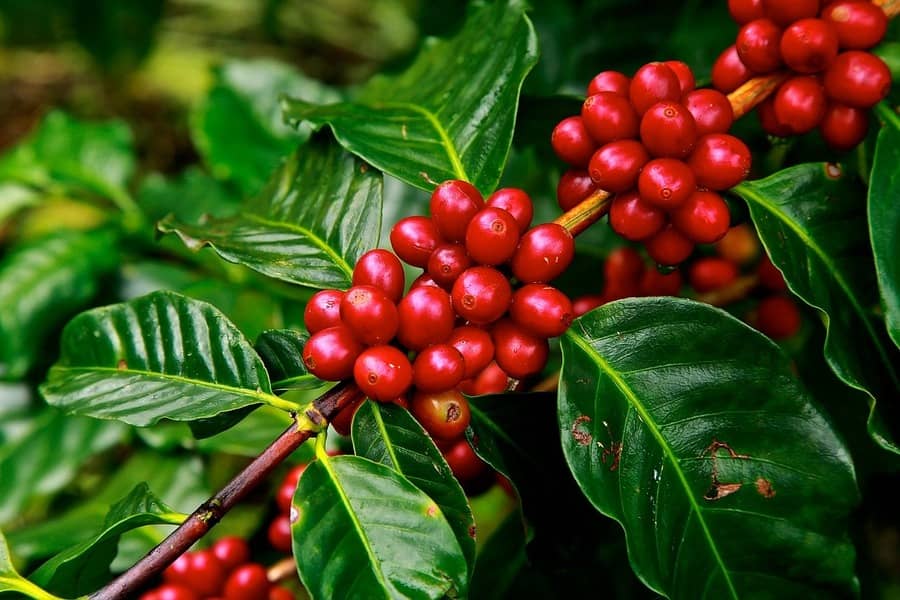The internal physical coffee market continues to follow the volatility of prices on commodities exchanges, especially the ICE US, but is trying to hold back the upward movement. Weaker differentials for this period of the year suggest a greater presence of sellers in the physical market. The fact is that the volume of coffee in the grower’s hands is still large, especially arabica, which, combined with the proximity of Brazil’s 2024 crop, can accelerate growers’ sell orders.
Good cup in the south of Minas Gerais is trading in early March at BRL 1,010 a bag (USD 204 a bag), practically repeating the average level reached in February, when the market advanced 2% on average compared to January. Against September last year, when the cup changed hands at BRL 780 a bag (nominal price) and reached an average price of BRL 826 a bag (deflated price), the accumulated gains reached 22%. However, after a strong rally, the market shows signs of slowing down the uptrend, showing difficulty in advancing much beyond the level of BRL 1,000 a bag.
In any case, it remains above the deflated average for the month of March, despite not reaching the same price level as in the same period last year, when the positive detachment from the average reference was more significant. The higher dollar and firmer differentials in early 2023 justify this difference. The grower’s risk is that the market will fall, as happened last year, pressured by the arrival of the new Brazilian crop. This movement may start sooner this year due to the still high volume of coffee in the grower’s hands. Price indications for Brazil’s 2024 crop good cups in the south of Minas Gerais are around BRL 1,010 to 1,020 for delivery and payment in Sep/2024. The price is BRL 100 a bag above the 5-year deflated average (2019 to 2023) of BRL 910 a bag for the month of September, which confirms the good moment for sellers. In this sense, growers need to remain alert to opportunities, reducing exposure at the arrival of the crop. For those who want to bet more heavily on the winter in Brazil, the best alternative is financial operations to keep up with the highs, such as structures known as call spread.
Fine cups also work above the average reference indicated at BRL 1,075 a bag (USD 217), very close to the graphic top between BRL 1,090 and 1,100 a bag. The market remains in a region favorable to sellers and shows difficulty in overcoming barriers to continue the upward movement. The price for forward commitments with the new crop ranges from BRL 1,075 to 1,085 a bag for settlement in Sep/2024.
Rio coffee in the Matas de Minas region gained upward strength at the beginning of March and is trading again at BRL 900 a bag (USD 182), the highest level since last May. Thus, it enlarges the positive distance from the average line of the last 5 years. The greater demand from the domestic industry, due to the difficulty in purchasing and the very high price of conillon, ends up boosting the prices of arabica’s weaker cups. However, it is important for growers to be careful not to miss the selling moment, as the arrival of new coffee, even with many defects and a high percentage of green beans, should negatively affect price indications. This coffee should start appearing in trading areas next April. On the other hand, signs of drier weather at the harvest can help reduce the supply of these cups as well as the discount between weaker and better cups.
Conillon type 7 in Espírito Santo rose again in early March and is trading at BRL 870 a bag (USD 176), widening the distance from the average reference and consolidating the market within a space that is clearly favorable to sellers. The gains in the domestic conillon price are driven by the rise in robusta in London. The short supply, especially in Vietnam, due to the lower-than-expected production and the withdrawn attitude of growers, ends up limiting the availability of coffee from this important origin. Of course, the supply situation associated with the difficulty in the flow between Asia and Europe, due to the attacks in the Red Sea, ends up bringing more international buyers to Brazilian conillon, which is reflected in a firmer differential and a greater connection to the external scenario.
Conillon from Brazil’s 2024 crop should begin to appear on the market at the end of March, sooner than normal, gaining volume in April. The window between crops is getting narrower every day, which requires extra attention to the remaining sales flow so as not to miss the excellent moment in the market. Still under the influence of these inflated world prices, trying to make some new-crop sales would also be an interesting strategy for growers. The arrival of the Indonesian crop in April, associated with the beginning of the Brazilian harvest, could take away some of the strength of conillon prices. In any case, external interest should remain high, especially in the first months of Brazil’s new crop, which tends to alleviate the negative seasonal effects on prices.
The domestic industry works from hand to mouth and further away from conillon, showing a greater interest in cheaper arabica coffees. The price difference between conillon 7/8 in Colatina and hard cup arabica with 600 defects in Minas is BRL 30 a bag. Some Rio cup coffees with more defects are trading in Minas Gerais between BRL 840 and 850 a bag, a lower price than conillon from Espírito Santo. The decision of the domestic roasted and ground industry is based on prices, shipping costs, and taxes involved until the product reaches the industry, with a clear advantage for arabica at this moment.

